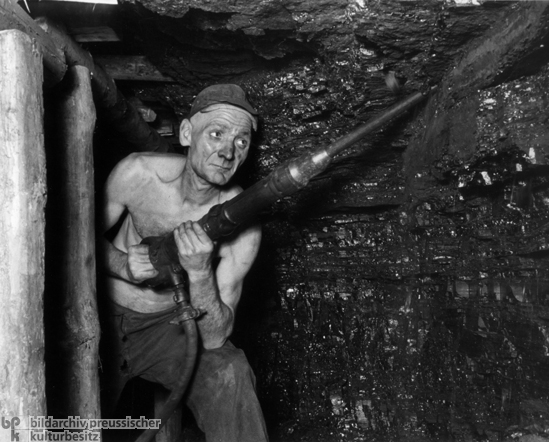|
"Activist" Adolf Hennecke (1948)
Starting in 1947, the SED and the economic authorities of the Soviet occupation zone attempted to raise economic productivity. Outdated machinery, in-kind reparations sent to the Soviet Union, and the concentration of scarce resources in a few heavy-industry complexes meant that this goal was to be achieved primarily through increases in labor productivity. To this end, the ruling powers – following the Soviet model (Alexei G. Stakhanov) – initiated an "activist movement," in which particular production sites and "activists" were honored with medals and prizes. The campaign was launched with the record-breaking yield of miner Adolf Hennecke, who, after careful preparation, brought in 24.4 cubic meters of coal during a single shift in October 1948, thereby exceeding the standard quota by 387%. Subsequently, the "Hennecke movement" came to be synonymous with the "activist movement" in the GDR's industrial parlance. The image shows Adolf Hennecke inside the mine of the publicly owned Oelsnitz Coal Mine in the Ore Mountains (Erzgebirge) [VEB Steinkohlewerk Oelsnitz (Erzgebirge)]. Photo by Herbert Hensky.

|


